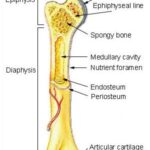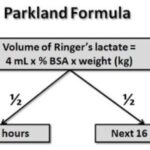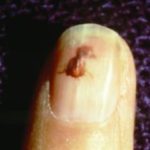What is Oily Stool?
“For someone who has suffered from irritable bowel disorder in most of their adult life hood have become more familiar with the contents of the toilet bowl that you ever cared to be. In many cases appearance of difference texture, color, odor of the stool can give rise to different health issue. Find out here some amazing yet gross ideas about your poo!”
Have you ever experienced a greasy, bulky stool that coming out into your anus while you are doing bowel movement? (That’s sound so gross!). Health professionals medically termed this as Steatorrhea, the stool may appear to be frothy, and has gray to pale yellow color, it is often bulky and often floats and most disgustingly has very foul odor.

The appearance of greasy or oily stool suggests that the fat in the digestive tract was unable to absorb. The fats are normally digested in the small intestine together working with bile and pancreatic digestive enzymes. Therefore, fat impaired absorption might impose disorders in liver, gallbladder, biliary tract, pancreas and small intestine.
In many cases for a particular healthy person, they undergo normal mechanism of fat absorption if any disruption occurs during the process then it will lead to Steatorrhea or fatty diarrhea.
The normal fat absorption mechanism involves multifaceted combination of bile salts; digestive enzymes and the unharmed mucus of the intestines in order to uptake all the hydrophobic complexes. Initially, lipids are emulsified and hydrolyze by the pancreatic, gastric lipase and colipase.
All the hydrolyzed lipids are aggregated in to micelles adding the bile salts in the jejunum and duodenum (specific area in the rectal system) then micelles are being absorbed through passive and active process via the lymphatic system and then transported into circulation.
Causes
Individuals suffering from fat malabsorption or Steatorrhea or Oily Stool have different causes and diagnostic testing is highly adviced. However, common factors that caused Steatorrhea can be described by the following;
- Bariatric surgery (weight loss procedure)
- Biliary stricture (narrowing of bile duct
- Biliary tract disorder (gallstones or Cholangiocarcinoma)
- Celiac Disease (sensitivity to gluten products)
- Certain Oral medications that blocked the fat absorption
- Chron’s disease
- Congenital birth defects like biliary atresia- failure in developing the bile duct
- Congenital Pancreatic lipase Deficiency
- Cystic Fibrosis (Genetic disorder that interferes with lung and pancreatic function)
- Exocrine Pancreatic Insufficiency (meaning lack of Lipases, & bile salts)
- Food intolerances (difficulty in digesting food)
- Gallbladder diseases
- Gastrointestinal infection
- Lactose intolerance
- Liver & Pancreatic ailments
- Pancreas Illness or Pancreatic cancer
- Pancreatitis (inflammation of the Pancreas)
- Parasitic diseases
- Radiation therapy may cause injury to the mucosal lining
- Short-bowel Syndrome or shortening of the intestine
- Ulcerative colitis (affects only the colon)
Diagnosis
Questionnaire
In order to accurately diagnose your condition, some of the licensed health practitioner will ask common questions related to oily stool including the following;
- Are you currently taking medications such as antibiotics?
- When did you experience defecating with greasy stool?
- Have you noticed any blood, mucus or pus in your stool?
- Did you notice any changes in your stool in terms of appearance, texture, consistency and odor?
- Have you ever had stomach surgery before?
- Did you make any changes to your diet recently?
- Are you taking any laxative pills?
- Have you ever similar symptoms before?
- What other symptoms do you feel right now?
- How often do you feel this kind of feeling?
Laboratory Testing
Stool Test
The stool test is being done after collecting some amount of feces in order to diagnose certain conditions affecting the digestive tract system. It usually involves laboratory analysis such as microscopic examination, chemical tests, and microbiologic tests. Then, the stool will be examined for its color, consistency, amount, shape, odor and microscopic searching for the presence of mucus.
A qualitative fecal analysis counts the fat globules presence in the stool. The test measures two types of fat globules mainly the neutral fat and fatty acids.
According to Dr. John Hanrahan and Nurse Rita Sather of University of Rochester Medical Center, the results for qualitative fecal analysis are must be;
- Fewer than 50 neutral fat globules seen under the microscope
- Fewer than 100 fatty acid fat globules seen under the microscope
While, the result for a quantitative fecal fat analysis are given in grams per 24 hours and the normal results must be;
- 2 to 7 g/24 h for adults, with fat being less than 20 percent of the solid stool sample
- Less than 1 g/24 h for an infant:
- In bottle-fed babies, fat should make up 30 to 50 percent of the sample
- In breastfed babies, fat should make up 10 to 40 percent of the sample
However, if the results are higher than the normal test, it suggests that you are infected with diseases (mentioned above).
Blood Test
Blood test usually done to measure the level of specific nutrient compound such as vitamin B-12, vitamin D, foliate, iron, calcium, carotene, phosphorus, albumin, and protein encapsulated in the blood. However, lacking for these specific vitamins or compound doesn’t mean malabsorption syndrome or Steatorrhea. It only suggests that the food you intake doesn’t have high level of these nutrients.
Hydrogen Breath Test
It is known as HBT diagnostic tool to assess for small intestinal bacterial overgrowth and carbohydrate malabsorption, such as the lactose, fructose, and sorbitol malabsorption.
For instance, if lactose is not absorbed, it directly enters the colon. Then as the lactose enters in the colon the bacteria will engulf the lactose resulting to the production of hydrogen gases. The left-over hydrogen is then absorb from the intestine passing to the bloodstream and enters in the lung. Therefore, the gas released from the lungs will be exhaled by individual, causing the presence of hydrogen gas in the breath.
Lastly, in a typical reading of HB test, if the level of hydrogen rises above 20 ppm over the lowest preceding value within the test period, the patient is diagnosed as lactose malabsorber.
Biopsy and Colonoscopy
These tests are helpful in cases investigating Crohn disease, microsporidia, CMV infection and histoplasmosis. Moreover, deep rectal biopsy is necessary to confirm of a suspected gastrointestinal amyloidosis such as rectal bleeding.
D-Xylose Absorption Test
This diagnostic test use to confirm a defect in the integrity of the gastrointestinal mucosa. D-xylose is derived from a simple sugar known as monosaccharide that does not require enzymes for digestion prior to the absorption. In contrast to the other form of sugar such as polysaccharides, it usually requires enzymes such as amylase to break them down in order to be absorbed as monosaccharide.
In determining for an individual patient, a 25 g oral dose of d-xylose is given and absorbed and excreted through urination after 4-5 hours. When there is a decrease of D-xylose level seen in conditions involving GI mucusa through urinary excretion means there is a small intestinal bacterial growth.
Treatment
Digestive health system is paramount if someone wants to experience vibrant and all round health. If you want to get rid of those oily stools that you have experienced for more than a months or years, the items below will help you to finally be free.
- Low fat diet and oil free diet is high recommended by health experts
- For some cases, people who have poor absorption of carbohydrates (Disaccharides of Lactose) must be avoided.
- Avoid too much intake of dairy products.
- For Patient who diagnoses with pancreatic disorder, doctor may prescribe oral pills that have pancreatic enzymes.
- Reduction of taking alcohol.
- Other treatment will depend on your health professional. Once the cause is tested and confirmed, then appropriate treatment can be decided on and applied.
SOURCES:
- https://www.healthgrades.com/symptoms/steatorrhea
- http://www.health-tutor.com/greasy-stool.html
- http://www.healthhype.com/fatty-stool-causes-of-steatorrhea-greasy-oily-bowel-movements.html
- http://steatorrhea.org/
- http://www.healthline.com/health/malabsorption#5
- http://www.webmd.com/digestive-disorders/stool-analysis#1
- https://online.epocrates.com/diseases/77021/Evaluation-of-steatorrhea/Diagnostic-Approach
- https://en.wikipedia.org/wiki/Hydrogen_breath_test
- https://www.urmc.rochester.edu/encyclopedia/content.aspx?contenttypeid=167&contentid=fecal_fat
- https://en.wikipedia.org/wiki/D-xylose_absorption_test
- http://diseasespictures.com/steatorrhea-fatty-stool-symptoms-causes-treatment/







Dear sir I have found very simple and useful this information. I never found so simple and discriptive words at any another, thanks very much.